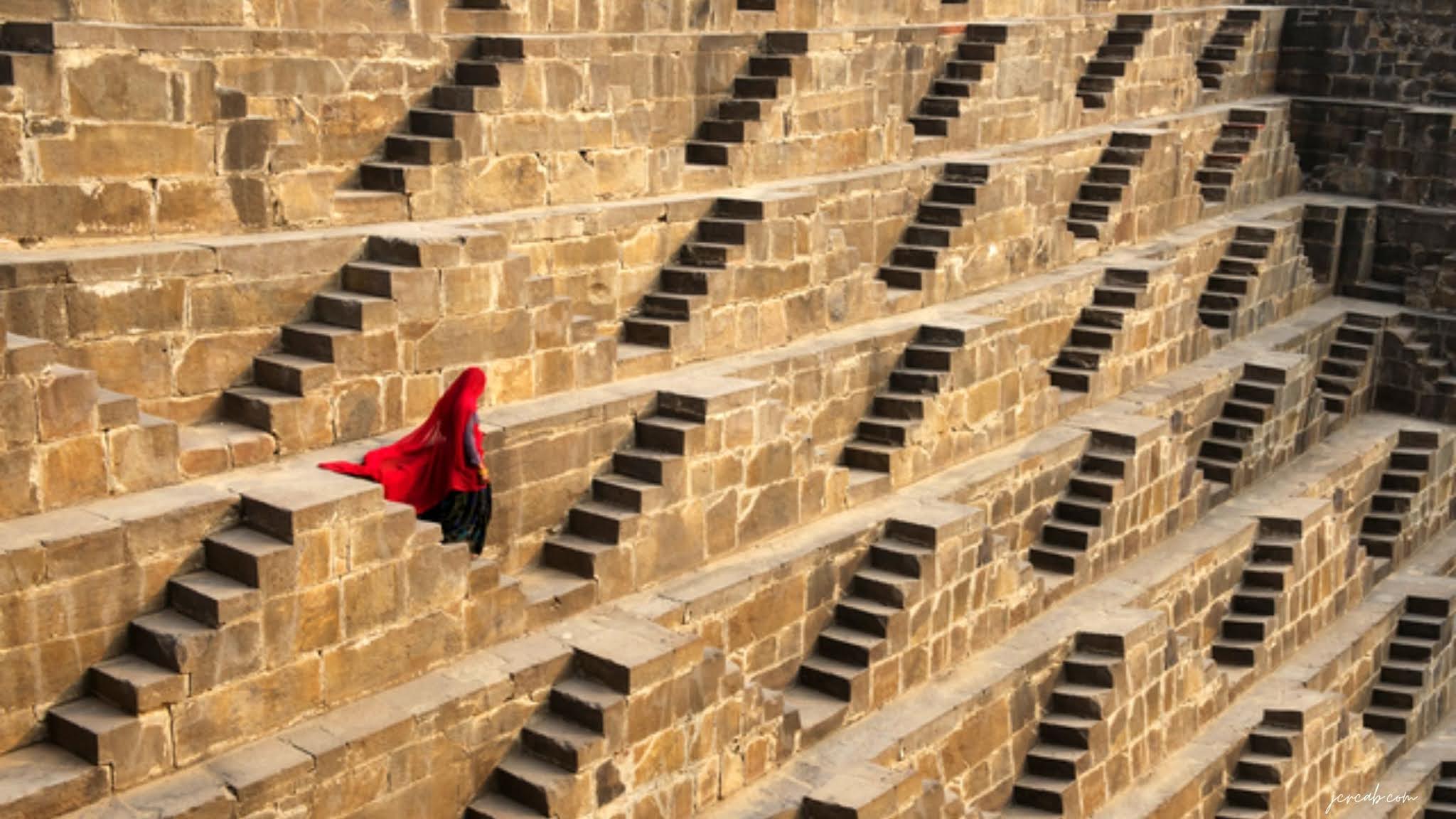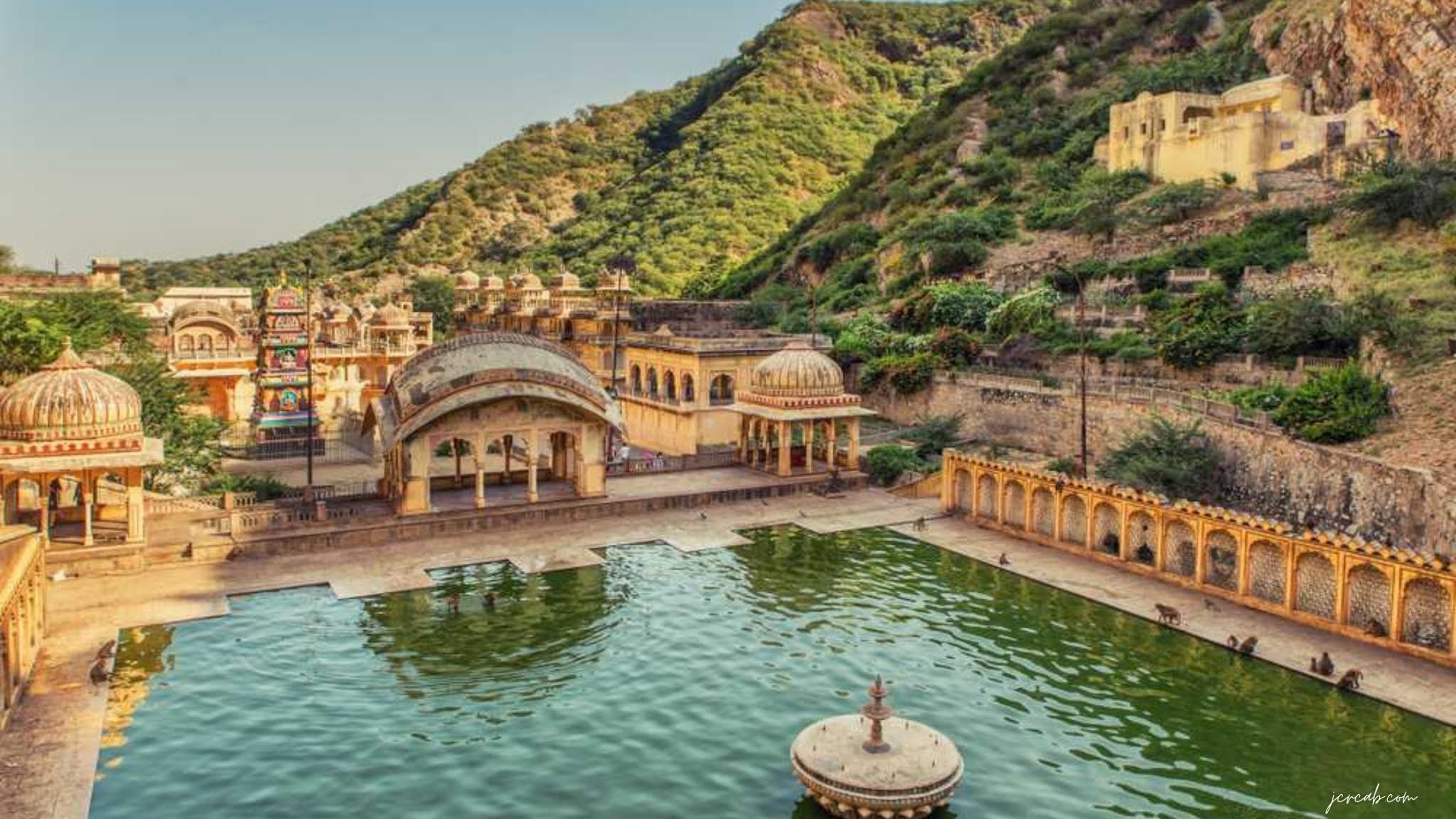Chand Bawdi is a major tourist attraction in the village of Abhaneri in Rajasthan which belongs to the 10th-century monuments. The village of Abhaneri is located near Jaipur, the capital of Rajasthan. Let us tell you that Chand Bauri is a very unique step well which has steps on three sides, which serves to store water. Please tell that this stepwell is more than 13 stories deep, in which more than 3500 stairs are built. Despite being more than 1000 years old, this stepwell remains the same today. Let me tell you that many films have been shot here, including Bhool Bhulaiya, The Fall, The Dark Knight Rises and Best Exotic Hotel Marigold.
Chand Bawdi is an architectural marvel that has several thousand steps in the form of water reserves in the semi-arid region of Rajasthan. It is looked after by the Archaeological Survey of India and this beautiful structure is not in use today. This most attractive stepwell of the world, Moon Bauri attracts tourists from all over the world. People who are architecture lovers definitely come to see this attraction. If you want other information about Chand Bauri or are planning to visit here, then definitely read this article, here we are going to give you complete information about the history, architecture and know-how of Chand Bauri.
History of Chand Bawdi Abhaneri
Built during the 8th and 9th centuries by Raja Chand and named after him as Chand Bawdi. This stepwell is about 1000 years old. It has been constructed so that the local people can get clear water throughout the year. Also, this grand structure is said to be a gathering place for the locals of Abhaneri, where they sit around the well. The bottom of the stairs gets cold during the summer days and during this time the temperature of this stepwell is 7-8 degrees. Apart from the common uses, according to Hindu mythology, the water of this well forms the boundary between heaven and earth. Choose a fleet and rent a taxi service in jaipur for a closer look at Moti Dungri with JCR CAB.
The architecture of Chand Bauri
This stepwell has worked extremely well in the extremely arid region of Rajasthan. Chand Bawdi is known for the superb architectural expertise of Indian architects. It displays geometrical precision with 13 floors down and 3500 stairs. Approximately 100 feet deep, the stepwell is a square construction measuring 35 meters on each side. It is believed that the lower part of the staircase was built in the 8th-9th century while the upper part was completed during the Mughal period in the 18th century.
Also Read:
Best time to visit Chand Bawdi -
The winters (November - March) are the best time to visit Chand Bawdi and other parts of Rajasthan as the nights are 8 ° and 32 ° Celsius during the season. The summers here are extremely hot due to which it is not fun to do sightseeing.
How to reach Chand Bawdi
Chand Bauri is located in Abhaneri which is 95 km from Jaipur city. You can easily travel to Abhaneri. If you are planning to visit Moti Dungri Ganesh Temple in Jaipur, Therefore, you can also take JCR CAB for a cab and taxi.
_____ _
+919799735500
info@jcrcab.com
https://www.jcrcab.com/











